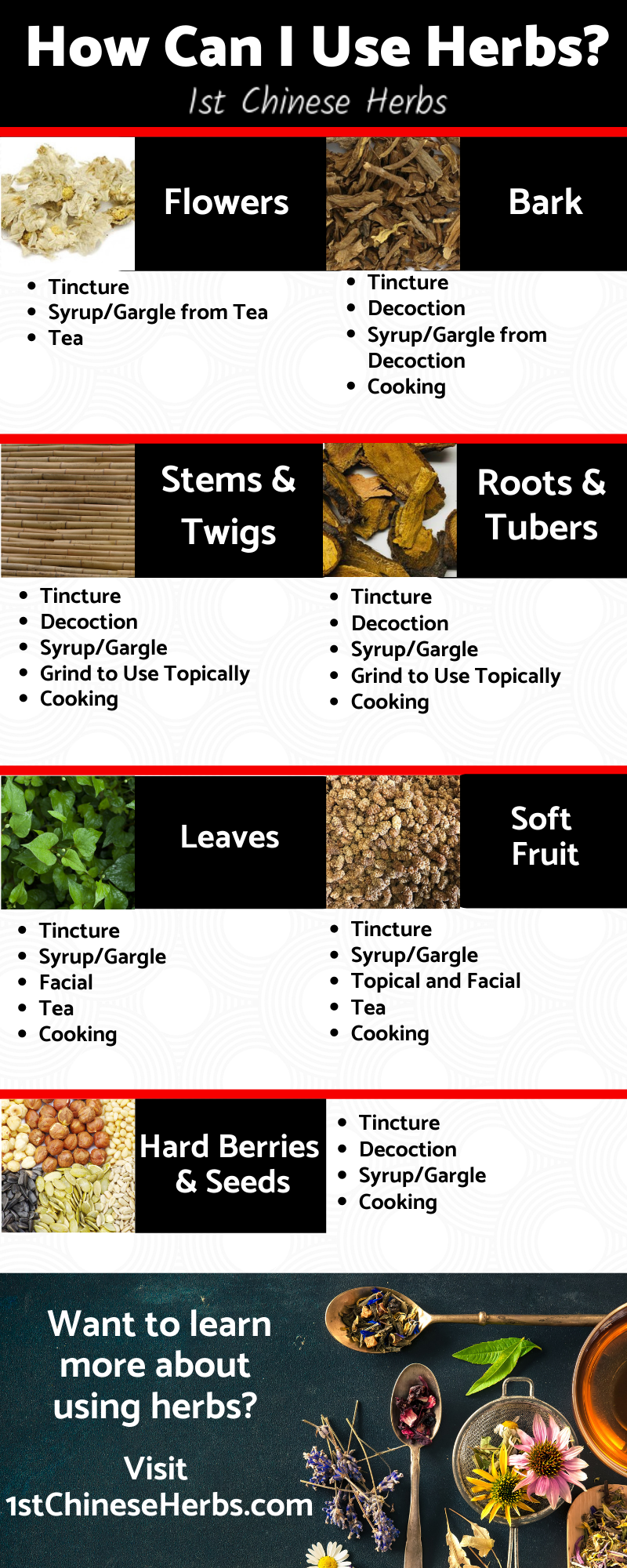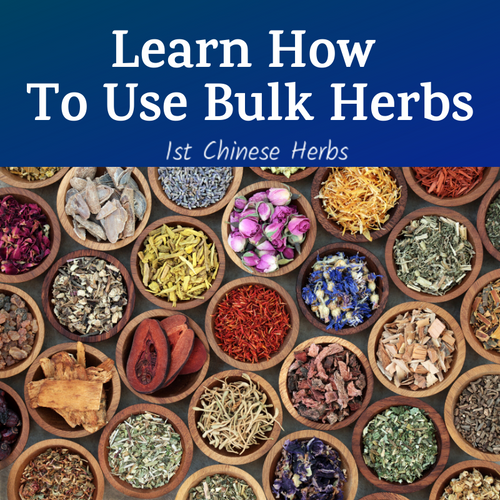Learn How To Use Bulk Herbs
Posted by 1st Chinese Herbs on Oct 28th 2019
You're ready to start taking control of your health naturally! You have done your research, consulted with your healthcare provider, acupuncturist or herbalist. You have ordered your herbs, Now, yes, right now, you are ready to start your natural health journey. But there is an issue. You have a bag of herb in front of you and have no idea how to use them. An image may pop into your head of having to chew a mouthful of dried herbs and you're thinking oh no! Not to worry. Herbs are easy to use! And no chewing required! Keep reading to see how to use bulk herbs to your advantage and enjoyment.
Bulk herbs come in two primary forms - powder and cut/whole forms. Powders are typically used in capsules but can also be used topically in poultices, added to recipes like any culinary and added to your favorite beverages and smoothies.
Herb Powder Benefits
- Fresh Herb Powder
- Ability to easily create your own formulas for your specific needs
- Avoid Fillers found in commercial capsules
- Making your own capsules cost less than ready made capsules
Cut and Whole herbs can be used in a wide variety of ways. Many whole or cut herbs can be ground into a powder, allowing for you to have a very fresh powder for your use. The most common medicinal uses for herbs are teas, decoction, compress, poultice, tincture (extract), in baths, syrups, gargles, creams and ointments. Herbs can also be used to make infused oils and vinegar or added into your soups, stews and gravies. They can even be used in sachets for aroma therapy and in crafts. Really, you are only limited by your own imagination!
Benefits of Whole & Cut Herbs
- Larger pieces offer a longer shelf life
- Can combine herbs to meet your specific health needs
- Many can be ground for fresh powders
- Wide variety of ways to use
How you use a whole or cut herb depends on what part of the plant the herb is from. Softer herbs such as leaves and soft berries require less prep than a bark, stem, seed or root. For instance, a tea made with Chrysanthemum leaves and goji berries may only require 5 minutes of steeping while a tea made with ginger root, cinnamon and licorice root may require 10 minutes of steeping to extract their medicinal properties. Below I will discuss a few of the methods of using whole & cut herbs.
Teas
Any herb can be used for tea. Harder herbs should be cut into smaller pieces or slightly crushed. You can drink tea or use it to may a spritzer, rinse for your skin or hair, syrup or gargle.
Decoction
A decoction is perfect for harder herbs such as roots, barks, seeds and twigs. Softer herbs can be used but you may want to add them later in the cooking process. You can drink a decoction like a tea, use it as a base for your favorite tea, make syrups, gargles, spritzers and rinses for your skin and hair or soak a cloth compress.
Tinctures (Extracts)
A tincture is a potent herbal extract. Tinctures are easy to make but do take about 6 weeks so you want to plan ahead if you want to use these. What is nice about a tincture is it only takes a few drops to get the same results as a larger dose of herbs. Tinctures also allow you to easily customize your formula to meet your health needs. Plus the small tincture bottles are easy to transport and use when you are out of the house. Simply apply a few drops to your tongue, in your tea or favorite beverage. Tinctures may also be added to syrups and gargles.


